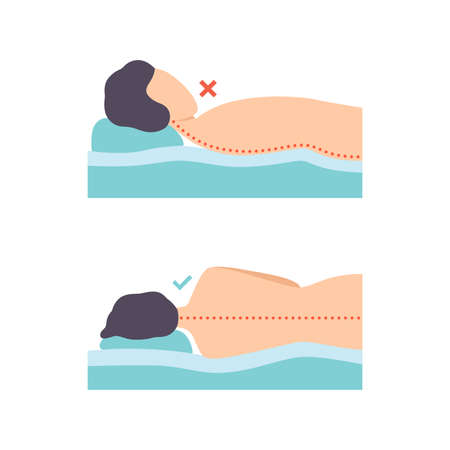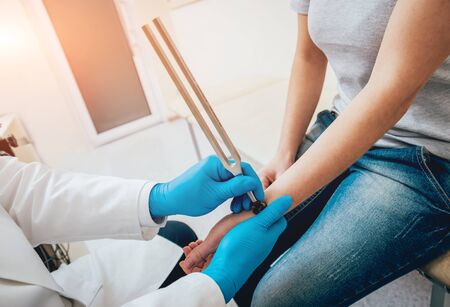Introduction to Fat Reduction Treatments
In recent years, the pursuit of effective body contouring solutions has become increasingly prevalent across the UK, with individuals seeking safe and reliable methods for reducing stubborn fat. Among the most talked-about options are cryolipolysis—often referred to as “fat freezing”—and traditional liposuction. Both techniques have carved out significant niches within the aesthetic industry, attracting clients from various backgrounds who are eager to improve their appearance and boost self-confidence. As these treatments gain popularity in clinics from London to Manchester, it becomes crucial to understand how they compare in terms of safety, results, and recovery time. This article aims to provide a clear and practical comparison between cryolipolysis and traditional liposuction, helping readers make informed decisions about which fat reduction method may best suit their individual needs and expectations.
2. How Each Procedure Works
Understanding the fundamental differences between cryolipolysis and traditional liposuction is essential for anyone considering body contouring treatments in the UK. Both procedures target unwanted fat, but they do so via distinct mechanisms and technologies, each with its own advantages and limitations.
Cryolipolysis (Fat Freezing)
Cryolipolysis, more commonly referred to as “fat freezing” in British clinics, is a non-invasive technique that uses controlled cooling to target and destroy fat cells beneath the skin. The technology works on the principle that fat cells are more susceptible to cold than surrounding tissues. During the procedure, a specialised applicator is placed on the treatment area—such as the abdomen or thighs—where it gently suctions the skin and cools it to a temperature that causes fat cell apoptosis (cell death) without harming nerves or other tissue. Over several weeks, the body naturally processes and removes these dead fat cells through the lymphatic system. Devices like CoolSculpting™ are widely used in reputable UK clinics for this purpose.
Traditional Liposuction
Traditional liposuction is a surgical procedure performed under local or general anaesthesia. It involves making small incisions in the skin and inserting a cannula—a thin tube—to manually break up and suction out fat deposits from targeted areas of the body. British clinics often use terms such as “tumescent liposuction” (which involves infusing fluid into fatty tissue before removal) or “power-assisted liposuction” (where a vibrating cannula helps loosen fat), reflecting specific technological approaches available locally. The process allows for more immediate and significant fat removal compared to non-surgical alternatives, but it does come with higher risks and a longer recovery period.
Comparison Table: Cryolipolysis vs Traditional Liposuction Mechanisms
| Aspect | Cryolipolysis (Fat Freezing) | Traditional Liposuction |
|---|---|---|
| Technology Used | Controlled cooling (e.g., CoolSculpting™) | Surgical suction with cannula |
| Invasiveness | Non-invasive | Surgical/invasive |
| Anaesthesia Required | No | Yes (local or general) |
| Targeted Areas | Pockets of stubborn fat | Larger volumes of fat |
Summary
In summary, cryolipolysis relies on advanced cooling technology to gradually eliminate unwanted fat without surgery, while traditional liposuction achieves more dramatic results by physically removing larger amounts of fat through surgical intervention. Your choice may depend on your personal goals, desired outcome, and willingness to undergo surgery versus opting for a less invasive approach commonly offered in British aesthetic clinics.

3. Safety Considerations and Potential Risks
When evaluating cryolipolysis versus traditional liposuction, safety is a critical factor for UK patients and clinicians alike. Both procedures are generally considered safe when performed by qualified professionals, but their risk profiles differ significantly due to the nature of the techniques involved.
Cryolipolysis: Non-Invasive Safety Profile
Cryolipolysis, often referred to as “fat freezing,” is a non-invasive method with no requirement for anaesthesia or surgical incisions. As such, the risk of infection, scarring, and major complications is considerably lower compared to surgical interventions. Typical side effects in UK clinics include temporary redness, swelling, bruising, numbness, and mild discomfort at the treatment site. These symptoms usually resolve within days to weeks. Rarely, paradoxical adipose hyperplasia—a condition where fat cells increase in size rather than decrease—has been reported, though it remains uncommon.
Traditional Liposuction: Invasive Procedure Risks
Liposuction involves making small incisions and using cannulas to remove fat under general or local anaesthesia. This increases the risk profile; potential complications include bleeding, infection, contour irregularities, seroma (fluid accumulation), and deep vein thrombosis (DVT). Patients may also experience longer-lasting bruising, swelling, and discomfort during recovery. Although serious adverse events are rare when liposuction is conducted by an experienced surgeon in a CQC-registered UK facility, they are not negligible.
Relevant UK Clinical Guidelines
The National Institute for Health and Care Excellence (NICE) and the British Association of Aesthetic Plastic Surgeons (BAAPS) provide clinical guidance on both procedures. For cryolipolysis, NICE recommends that patients be fully informed about limited long-term data and the importance of choosing regulated providers. For liposuction, BAAPS emphasises pre-operative assessment for DVT risk factors and strict adherence to sterile technique to minimise infection risks.
Comparative Risk Factors
The primary difference in safety between the two methods lies in their invasiveness. Cryolipolysis carries fewer systemic risks and requires minimal downtime but offers less dramatic results per session. Liposuction, while more effective for substantial fat removal, entails higher medical risks and a longer recovery period. Ultimately, patient selection and thorough consultation remain crucial for minimising risks regardless of the chosen method.
4. Expected Results and Effectiveness
When considering cryolipolysis and traditional liposuction, it is essential to compare the expected results, patient satisfaction, and scientific outcomes. Drawing from UK-based case studies and patient testimonials offers a grounded perspective on what individuals can realistically anticipate.
Visible Results: A Side-by-Side Comparison
| Treatment | Time to Noticeable Results | Degree of Fat Reduction | Skin Tightening Effect |
|---|---|---|---|
| Cryolipolysis (Fat Freezing) | 6-12 weeks post-treatment | 20-25% reduction in treated area per session | Mild, gradual tightening over time |
| Traditional Liposuction | Immediate (with swelling), final results at 3-6 months | Up to 50-70% fat reduction in treated area | Variable; may require additional skin-tightening procedures |
Patient Satisfaction in the UK Context
Anecdotal evidence from British patients shows differing levels of satisfaction depending on expectations and desired outcomes. Many individuals opting for cryolipolysis appreciate its non-invasive nature and gradual, natural-looking results. However, some express mild disappointment if expecting dramatic changes after just one session. Conversely, patients who undergo traditional liposuction tend to report higher satisfaction regarding the magnitude of fat removal, especially in stubborn or larger areas. That said, the more invasive nature and longer downtime sometimes lead to mixed feelings during the recovery phase.
Summary of Patient Testimonials (UK Clinics)
| Treatment Type | Positive Feedback Highlights | Common Criticisms |
|---|---|---|
| Cryolipolysis | No anaesthesia required Minimal discomfort Able to return to work same day |
Gradual results Not suitable for significant fat removal Multiple sessions often needed |
| Liposuction | Dramatic, immediate contour change Effective for larger fat deposits One-off procedure for most cases |
Surgical risks Bruising/swelling Downtime from work and daily activities |
Scientific Outcomes: What UK Studies Reveal
Recent studies from NHS-affiliated clinics and independent cosmetic centres in Britain have confirmed that both procedures are effective when performed by qualified professionals. Cryolipolysis consistently demonstrates moderate fat layer reduction with low complication rates. Traditional liposuction remains the gold standard for substantial fat removal but carries higher surgical risk and requires more commitment to aftercare.
5. Recovery Experience and Lifestyle Impact
When considering body contouring treatments, the recovery period and its influence on one’s daily routine are key factors, especially for those living fast-paced lives in the UK. Cryolipolysis, often branded as a ‘lunchtime procedure’, is minimally invasive and typically requires little to no downtime. Most individuals can return to work and their usual activities immediately after treatment—an attractive proposition for professionals in Britain who may have limited annual leave and a strong work ethic. Minor side effects such as mild redness, swelling, or numbness may occur, but these generally subside within a few days without interfering with social events or family obligations.
In contrast, traditional liposuction involves a more significant recovery commitment. The procedure is surgical, necessitating anaesthesia and post-operative care. Patients should expect at least a week off work, sometimes more depending on the extent of the fat removal. Bruising, swelling, and discomfort are common during this period. British patients need to plan carefully around work schedules and childcare responsibilities; taking sick leave or arranging for additional support at home might be necessary. Full recovery can take several weeks, during which strenuous exercise, driving, and even attending social functions may be limited.
Aftercare also differs markedly between the two procedures. Cryolipolysis requires little beyond avoiding intense heat or massage in the treated area shortly after the session. With liposuction, however, there are compression garments to wear, wounds to monitor, and sometimes prescribed medications to prevent infection or manage pain.
The impact on lifestyle is therefore quite distinct: cryolipolysis aligns well with typical British routines where minimal disruption is preferred—allowing people to maintain regular gym visits, commutes on the Tube, and attendance at weekend gatherings almost uninterrupted. Liposuction demands more logistical consideration and patience before resuming all aspects of daily life. In summary, for those balancing work commitments, family life, and social engagements so common across the UK, cryolipolysis offers a gentler transition back to normality compared to traditional surgical alternatives.
6. Cost and Accessibility in the UK
When considering Cryolipolysis and traditional liposuction in the UK, understanding the cost and accessibility of each treatment is crucial for making an informed decision. Both procedures fall under cosmetic treatments, which are rarely funded by the NHS, except in exceptional circumstances where there is a significant medical need. For most people, these treatments are privately funded, so let’s break down what you can expect in terms of pricing and availability across different regions.
Typical Pricing Structure
Cryolipolysis is often marketed as a non-invasive alternative to surgery, and this is reflected in its price point. In the UK, a single session typically ranges from £200 to £600 per area treated, depending on the clinic location and reputation. Multiple sessions may be required for optimal results, which can increase overall costs. Traditional liposuction, being a surgical procedure, generally comes at a higher price—usually starting at around £2,000 to £4,000 per area, with total costs easily exceeding £6,000-£8,000 for more extensive sculpting or multiple areas. These fees usually include consultations, anaesthesia, aftercare, and follow-up appointments.
NHS Availability
Neither Cryolipolysis nor traditional liposuction is routinely available on the NHS for purely cosmetic purposes. The NHS may consider funding surgical liposuction only if there is a documented medical necessity—such as treating certain types of lipoedema or post-traumatic fat deposits—but this is rare and subject to strict clinical criteria. Non-surgical options like Cryolipolysis are virtually never funded by the NHS.
Regional Differences in Access
Accessibility varies widely across the UK. Large urban centres such as London, Manchester, Birmingham, and Glasgow boast a wide array of private clinics offering both Cryolipolysis and liposuction. Here, competition among providers tends to keep prices relatively standardised and often gives patients more choice regarding technology and expertise. In contrast, rural areas or smaller cities might have limited options—patients sometimes travel significant distances for reputable providers or specialised surgeons.
How Common Are These Treatments?
Both procedures are increasingly popular among those seeking body contouring solutions in the UK. Cryolipolysis has seen a rapid rise due to its non-invasive nature and minimal downtime—appealing particularly to busy professionals who cannot afford lengthy recovery periods. Liposuction remains well-established but is often chosen by those seeking more dramatic or immediate results. While neither procedure is as commonplace as dental work or minor dermatological treatments, their visibility in high street aesthetic clinics reflects growing demand nationwide.
In summary, while Cryolipolysis offers a lower-cost entry point with greater accessibility in urban areas, both it and traditional liposuction remain largely private endeavours within the UK healthcare landscape. Prospective patients should always consider travel requirements, clinic reputation, and long-term value—not just initial price—when weighing up their options.
7. Choosing the Right Option for You
When deciding between cryolipolysis and traditional liposuction, it’s important to weigh several factors that go beyond clinical outcomes. Your choice should be guided not only by medical suitability but also by practical considerations relevant to life in the UK. Here are some key points to consider:
Assessing Your Health and Goals
Begin with an honest assessment of your health status and expectations. Cryolipolysis is typically suitable for those seeking modest fat reduction without surgery or downtime, whereas liposuction may be preferable if you desire more dramatic results or need larger areas treated. Speak openly with your GP or a qualified aesthetic practitioner about your goals, medical history, and any underlying conditions such as diabetes, which may impact your eligibility for either procedure.
Understanding Safety and Regulation in the UK
The UK has strict regulations for both surgical and non-surgical cosmetic procedures. Ensure that any provider—whether offering cryolipolysis or liposuction—is registered with the Care Quality Commission (CQC) or relevant professional bodies. Check qualifications, ask about complication rates, and insist on a thorough consultation before making a decision.
Recovery Time and Lifestyle Considerations
Cryolipolysis is attractive for busy professionals or parents because it requires minimal downtime; most people can return to work immediately. Liposuction involves a longer recovery period, time off work, and follow-up appointments. Consider your lifestyle, ability to take time off, and support at home when weighing these options.
Financial Implications
Neither procedure is typically available through the NHS for purely cosmetic purposes, so costs are out-of-pocket. Compare prices transparently and factor in potential additional expenses such as aftercare garments for liposuction or multiple sessions for cryolipolysis.
Local Recommendations and Next Steps
If you’re considering treatment in the UK, start with a consultation with your GP for general health advice. Next, seek reputable clinics with solid reviews and transparent information on procedures. Attend a face-to-face consultation to discuss risks, benefits, alternatives, and expected outcomes specific to your body type.
Final Thoughts
The right choice hinges on individual priorities—whether that’s minimal invasiveness, speed of results, recovery time, or cost-effectiveness. Take time to research, consult local experts, and reflect on what fits best with your needs and circumstances within the British healthcare landscape.


